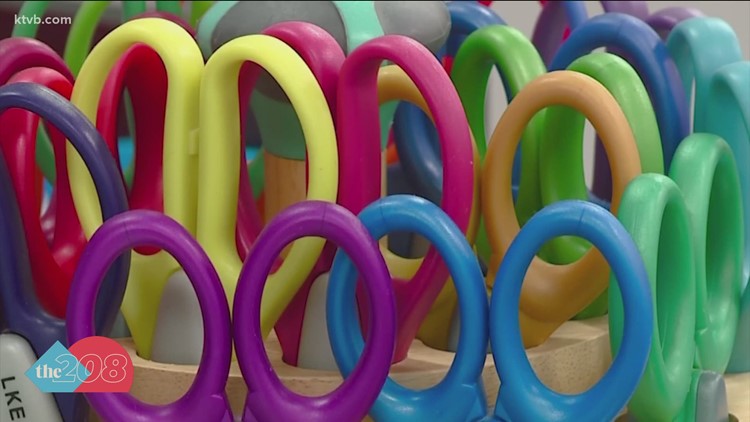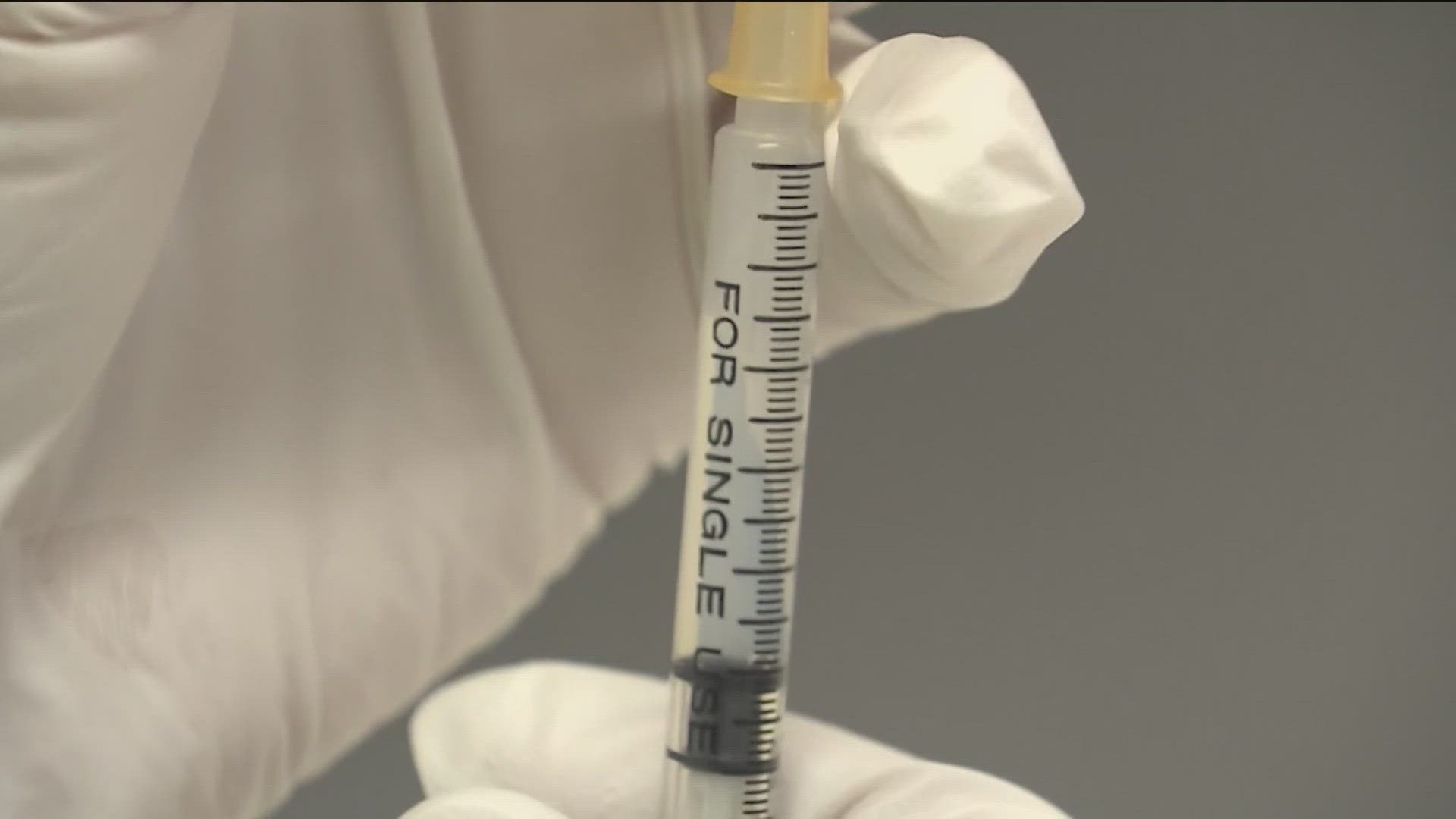NAMPA, Idaho — Editor's Note: This article was originally published in the Idaho Press.
In the past two weeks, health care providers in the Treasure Valley have noticed a significant increase in the number of children under the age of 18 testing positive for the coronavirus, just as school is about to resume later this month.
With most local school districts not requiring masking as recommended by the Centers for Disease Control’s newest guidelines, the increase in cases among children is worrisome given that school has not yet begun, said David Peterman, a pediatrician and CEO of Primary Health Medical Group.
“I would be extremely concerned if children would go back to school and not wear masks,” Peterman said.
The Boise School District Board voted last week to make masks mandatory in schools for all students, staff, and visitors regardless of vaccination status, reversing an earlier decision to make masks optional and bringing its policy in line with CDC recommendations. But other school districts in the area — West Ada, Kuna, Vallivue, and Nampa — will start the school year with a masks-optional policy.
The Caldwell School District will have a board meeting Monday in which masking policy will be voted on, said Allison Westfall, the communication director for both the Caldwell School District and the Kuna School District.
The number of positive COVID-19 cases has climbed across the U.S. in recent weeks, and the delta variant is likely to blame, Peterman said. Given that masking policy has proven effective in stopping the spread of the virus and keeping kids in schools, Peterman questioned the idea of school districts waiting to implement mask wearing or other mitigation measures until cases arise among students or staff.
“Let’s take drunk driving,” Peterman said. “Would you recommend we say to all drivers, ‘You can’t drink and drive,’ or would you say, ‘Let’s wait and see how many die driving drunk’?”
“It makes no sense to wait until more children are sick, hospitalized, and God forbid, die,” he said.
The number of children between the ages of 5-12 being brought to Primary Medical Group offices for COVID-19 testing has increased 70% in the past two weeks, Peterman said. The number of children testing positive between the ages of 5-12 has gone from 4% to more than 12%, and the number of children testing positive between the ages of 12-18 has gone from 8.7% to 16.5%, he said.
The number of children needing inpatient treatment for COVID-19 has increased in the past two weeks at St. Luke’s Hospital, said Elizabeth Kleweno, pediatric hospitalist medical director with the hospital. Four weeks ago, there seemed to be lull in the number of children being admitted with COVID-19, but in the last two weeks, there has been an uptick, she said. Kleweno has seen cases of Multisystem Inflammatory Syndrome, or MIS-C, a complication of COVID-19 in which children develop severe inflammation in different parts of their body, but the rate of children with the syndrome does not appear to be increasing along with case numbers, she said.
Most of the children who are being admitted are coming from households in which the parents or other residents are not vaccinated, Kleweno said.
Over the past two weeks, within Central District Health’s jurisdiction, which includes Ada, Elmore, Boise, and Valley counties, the number of COVID-19 cases has risen 2.5 times in children between the ages of 0-4, from 9 cases to 23 cases, doubled in the 5-12 age group, from 39 cases to 88, and doubled in the 12-18 age group, from 32 cases to 65, according to data provided by Alina Gilmore, public health information technician with the district. However, hospitalization of children in those age groups has not increased, she said.
Similarly, in Southwest District health’s district, which covers Canyon, Owyhee, Gem, Washington, and Adams counties, cases in both the 0-12 and 12-18 age groups almost doubled from June to July, said Ashley Anderson, public information officer with the district. As of mid-July, the delta variant accounted for over 80% of cases in the state, Anderson said, and it is more transmissible than other variants of the virus. That in combination with lower than ideal vaccination rates explains the increased spread, she said. Hospitalization of children did not increase among these age groups, she said.
Since children under 12 are not eligible for a vaccine, more eligible individuals getting vaccinated would help protect children, as would masking and social distancing, Anderson said.
School districts have a variety of plans for how to mitigate the pandemic going into the new school year. The Nampa School district will not require masks, but if more than 3% of the student body tests positive for the virus, the district will reach out to the local health district for their recommended guidance, according to the school district’s back to school plan.
The 3% figure was developed in conjunction with Vallivue School District and other school districts in the area, said Kathleen Tuck, communications director for the district. Having 3% of the student body test positive for COVID-19 was the threshold officials agreed would pose challenges to operating schools, she said. Presently, there is no threshold of cases that would trigger the district to reinstate a masking policy, Tuck said. Such a decision would have to be made by the board, she said.
The Vallivue School District’s plan for the coming year includes a similar figure: if more than 3% of students and staff report positive COVID-19 cases in a two-week period, students and staff will be encouraged to wear face coverings, but it will not automatically be required.
West Ada School District, the largest school district in the state, will not require masking, instead opting to evaluate mitigation strategies on a school-by-school basis, according to the district’s pandemic operating plan. The district looks at community data, vaccination rates, and a number of other factors when deciding policy, including whether to encourage masking or go to remote instruction, said Char Jackson, chief communications officer with the district.
“If there’s a large spread in our community, but we’re not seeing that in our schools, then it doesn’t make sense for us to have a mask mandate in that case,” Jackson said.
A local parent group has asked the district to reconsider, according to reporting by KTVB.
In the Kuna School District, masks will not be required to start, but could become required if cases among the school community or the Kuna community increase above 100 cases per 100,000 people in the previous 7 days, according to the district’s operational and educational plan. The school board meets next on Sept. 13 and may make adjustments to the plan at that time, Westfall said.
As Gov. Brad Little and Boise Mayor Lauren McLean discussed at two separate press conferences last week, the best way to protect kids is to get more eligible people vaccinated. Increasing vaccination, masking and social distancing are still the go-to mitigation measures to help protect kids and communities, said Niki Forbing-Orr, public information manager with the Idaho Department of Health and Welfare.
Every time the virus is spread, it has the potential of mutating and producing an even worse variant than delta, Forbing-Orr said.
At KTVB, we’re focusing our news coverage on the facts and not the fear around the virus. To see our full coverage, visit our coronavirus section, here: www.ktvb.com/coronavirus.
Facts not fear: More on coronavirus
See our latest updates in our YouTube playlist:



